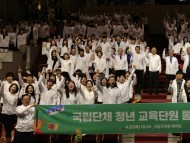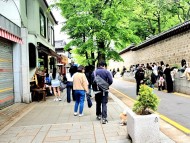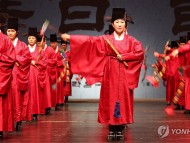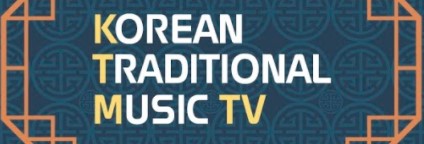2024.04.26 (금)
Return of an "Angbuilgu” Sundial, the Epitome of Joseon Scientific Technology and Reflection of the King’s Love for the People
(국영문 동시 배포) 애민정신을 담은 조선 과학기술의 정수, ‘앙부일구’의 귀환
- Michael Lammbra…
- 등록 2020.11.18 14:04
- 조회수 381
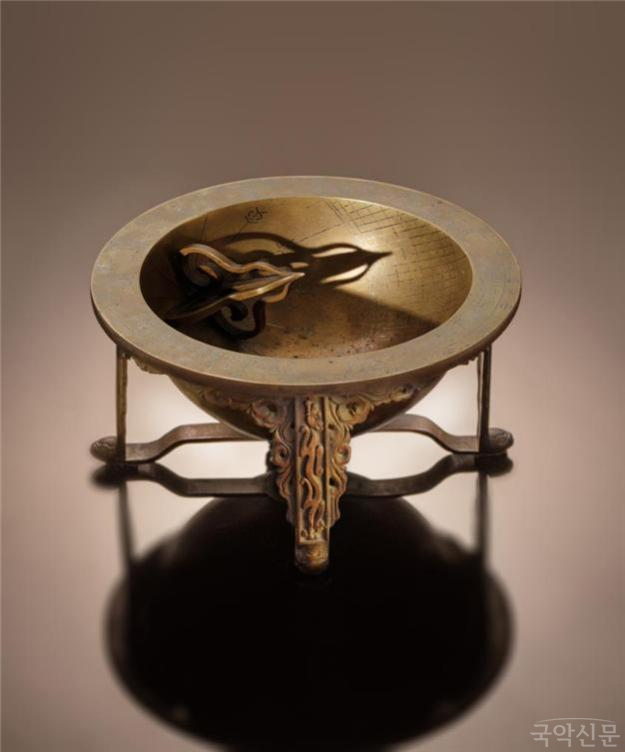
문화재청(청장 정재숙)은 지난 상반기 미국의 한 경매에 출품된 조선 시대 해시계인 ‘앙부일구’(仰釜日晷)를 국외소재문화재재단(이사장 최응천)을 통해 지난 6월 매입해 17일 오후 2시 국립고궁박물관(관장 김동영)에서 공개한다.
문화재청은 지난 1월 이 유물에 대한 정보를 입수하였고 유물에 대한 면밀한 조사와 검토, 국내 소장 유물들과의 과학적 비교분석 등을 진행하였으며, 코로나19로 인해 3월부터 6월까지 수차례 경매가 취소되고 연기되는 우여곡절 끝에 지난 8월 마침내 국내로 들여오는 데 성공할 수 있었다.
‘앙부일구’는 ‘하늘을 우러러 보는(仰, 앙) 가마솥(釜, 부) 모양에 비치는 해 그림자(日晷, 일구)로 때를 아는 시계‘ 라는 뜻으로, 조선 시대 과학 문화의 발전상과 통치자의 백성을 위하는 마음을 보여주는 대표적인 유물이다.
이번에 환수된 앙부일구는 18세기에서 19세기 초 사이에 제작된 것으로 추정되며, 지름 24.1㎝, 높이 11.7㎝, 약 4.5㎏의 무게를 지닌 금속제 유물이다. 정확한 시간과 계절을 측정할 수 있는 조선의 우수한 과학 수준을 보여주는 동시에, 정밀한 주조기법, 섬세한 은입사 기법, 다리의 용과 거북머리 등의 뛰어난 장식요소를 볼 때 고도로 숙련된 장인이 만든 높은 수준의 예술작품임을 알 수 있다.
유교 국가에서 ‘관상수시(觀象授時, 하늘을 관찰하여 백성에게 절기와 시간을 알림)’는 왕의 가장 중요한 임무 중 하나였다. 앙부일구는 백성을 굽어 살피는 애민(愛民) 정신을 담아 만든 조선 최초의 공중(公衆) 시계로, 세종 대부터 조선 말까지 제작되었다. 세종대왕은 앙부일구를 처음으로 만들어 백성들이 시간을 읽을 수 있도록 종묘와 혜정교(惠政橋, 지금의 서울 종로1가)에 설치한 바 있었다.
현대 시각체계와 비교했을 때도 거의 오차가 나지 않으며, 절후(節候, 한 해를 스물넷으로 나눈 기후 표준점), 방위(方位), 일몰시간, 방향 등을 알 수 있는 체계적이고 정밀한 과학기기다.
이러한 높은 가치에도 불구하고 조선시대 과학 기기류는 기록으로만 전하는 것이 많으며, 이와 유사한 크기와 재질의 앙부일구는 국내에 불과 7점만 전하고 있다.
환수된 앙부일구는 서울의 위도에서 정확한 시간을 읽을 수 있도록 제작되었다. 이제 고국의 하늘 아래로 돌아와 비로소 정확한 시간을 알릴 수 있게 되었다는 점에서 이번 환수가 가지는 의미는 더욱 뜻깊다.
이번에 돌아온 앙부일구는 앞으로 국립고궁박물관에서 관리되며 자격루, 혼천의 등 기타 과학 문화재들과 함께 연구, 전시, 보고서 출판 등 다양한 분야에서 활용될 계획이다. 특히, 언론공개 다음 날인 18일(수)부터 12월 20일(일)까지 박물관 내 과학문화실에서 모든 국민에게 특별 공개할 예정이다.
문화재청은 코로나19로 인한 여러 어려움에도 불구하고 정부혁신과 적극행정의 하나로 성공적인 환수를 한 앙부일구를 동력으로 삼아 앞으로도 소중한 국외소재문화재 발굴과 환수에 최선을 다할 것이다.
Return of an "Angbuilgu” Sundial,
the Epitome of Joseon Scientific Technology and Reflection of the King’s Love for the People
The Cultural Heritage Administration (Administrator Chung Jae-suk) will be making an Angbuilgu- a sundial from the Joseon Dynasty -available to the press at the National Palace Museum of Korea (Director Kim Dong-young) at 2 PM on November 17. This sundial went on auction in the United States and was purchased this past June by the Overseas Korean Cultural Heritage Foundation (Chairman Choi Eungchon).
Under the authority of the Cultural Heritage Administration, the Overseas Korean Cultural Heritage Foundation collected information about this sundial last January and conducted a close research and investigation of the item, including scientific analysis for comparison with other metal sundials housed in Korea. The scheduled auction of the sundial was postponed several times from March to June due to the COVID-19 pandemic, but it was finally brought home to Korea in August.
The classical Chinese characters comprising the term "Angbuilgu” respectively mean "looking up at the sun”(仰, ang), "cauldron”(釜, bu), "sun”(日, il), and "shadow”(晷, gu), which together indicate "a sundial that tells time by the shadow of the sun cast over its cauldron-shaped body.” Angbuilgu sundials testify to the advanced science of the Joseon period and are symbolic of the Joseon king’s love for the people.
The returned Angbuilgu sundial is believed to have been produced between the eighteenth and early nineteenth century. It measures 24.1 centimeters in diameter and 11.7 centimeters in height and weighs around 4.5 kilograms. The use of elaborate metal casting methods, refined silver inlay decoration, dragon and turtle head designs on the legs, and other features attest to advanced level of science and artistry measuring seasons and time in Korea at the time, and render it a high-quality work of art produced by skilled artisans.
In ancient Confucian states, the king would observe the celestial bodies in order to inform the people of solar terms and the correct time. This was considered one of the most important royal duties, and Angbuilgu sundials were designed to serve this aim, thus reflecting the king’s love for the people. Angbuilgu sundials were the first public chronographs produced in Joseon, dating from the reign of King Sejong through the late Joseon period. King Sejong commissioned the first Angbuilgu sundials and ordered them mounted in front of the Jongmyo Ancestral Shrine and Hyejeonggyo Bridge (present-day Jongno 1-ga) so that people could know the time. Angbuilgu sundials make little time difference when compared with certain modern time standards. They are accurate and systematic scientific instruments that can inform users about the subdivisions of the seasons (a climatological standard based on 24 divisions of the year), bearings, sunset time, and directions.
Despite their high value, few scientific instruments from the Joseon period managed to be preserved and are known today only through historical records. Only seven of these large metal Angbuilgu sundials exist in Korea.
The retrieved Angbuilgu sundial only gives the correct time when it is calibrated for the latitude installed at Hanyang (Seoul). The return of the Angbuilgu sundial is indeed meaningful as it has finally been returned to its home country and can again give the correct time.
The National Place Museum of Korea will take care of the Angbuilgu sundial and utilize it along with other scientific cultural properties such as the Jagyeongnu water clock and Honcheonui armillary sphere for research, exhibition, publications, and other diverse purposes. This Angbuilgu sundial will be displayed to the public at a special exhibition held in the Science Culture Gallery of the museum starting Wednesday, November 18, the day following the press viewing.
Despite the many difficulties imposed by the COVID-19 pandemic, the Cultural Heritage Administration successfully retrieved this Angbuilgu sundial as part of its contributions to the Government Innovation and Active Administration campaigns. Spurred by this achievement, the Cultural Heritage Administration will continue to make sincere efforts to discover and retrieve precious Korean cultural heritage currently residing abroad.
- [] 제16회 순천 낙안읍성 전국가야금병창경연대회(05/25-26)
- [] 제18회증평국악경연대회(05/11)
- [] [군산]제32회 전국청소년민속예술경연대회(05/18)
- [] 제42회 전주대사습놀이 학생전국대회(5/18∼6/2)
- [] 제50회 전주대사습놀이 전국대회(5/18~6/3)
- [] 제20회 전국대금경연대회(06/08-09)
- [] 제4회 함양 전국국악경연대회(05/12)
- [] 제18회 대한민국 전통예술무용·연희대제전(06/09)<br>무용(전통무용…
- [] 제48회 부산동래 전국전통예술경연대회(06/15-16)(무용.기악)
- [] [부여]제1회충남전국청소년국악경연대회(05/04)(판소리.기악.타악)
- [] [광주]제21회 대한민국 가야금병창대제전(06/16)
- [] 제18회 과천전국경기소리경창대회(05/04)
- [] 제11회 곡성 통일전국종합예술대전(06/15-16)(판소리.무용, 기악,…
- [] 제24회 인천국악대제전 전국국악경연대회(05/25-26)
- [] 제26회 창원야철전국국악대전(07/06- 07)
- [] 2024 무안장애인 승달국악대제전(06/01-02)
- [] 제22회 무안전국승달국악대제전(06/01-02)
- [] 제10회 전국공주아리랑민요경창대회(05/26)
- [] 제17회 상주전국국악경연대회(05/19)(성악/무용·연희/기악)
- [] 제10회 전국밀양아리랑경창대회(05/26)
- [] 제21회 강남전국국악경연대회(05/22)(무용/타악/판소리/민요)
- [] 제26회 서편제보성소리축제 전국판소리 고수 경연대회(05/04-05)
- [] [순천]제10회 낙안읍성 전국 국악대전(04/27-28)
- [] 제29회 안산전국청소년국악경연대회(05/26)
- [] 제26회(통합58회) 여수진남전국국악경연대회(05/18-19)
- [] 제51회 대한민국 춘향국악대전 경연대회(05/05)(05/11-12)
- [] 제33회 고령전국우륵가야금경연대회(04/26-27)
- [] [부평]제8회 전국 청소년국악경연대회(05/11)(관악/현악/성악)
- [] 제22회 구례전국가야금경연대회(05/04-05)
- [완도]제24회 장보고국악대전 전국경연대회(05/05-06)(무용/판소리…
- [] 제23회 대한민국 빛고을 기악대제전(05/25-26)
-

[국악신문 소장자료] (40)’무궁화노래‘가 처음 불려진 독립관(獨立館) 전경
1897년 8월 13일 ‘대조선 개국 505회 기원절 경축식’에서 계관시인 윤치호가 작사한 무궁화노래(찬미가 제10장)가 처음 발표된 독립관 전경. 현 애국가의 원형 ‘...
-

[수요연재] 이무성 화백의 춤새(88)<br>김근희 명인의 '경기검무' 춤사위
경기검무 경기검무(京畿劍舞)는 서울 및 경기 지역을 중심으로 형성된, 전통 악기의 반주에 맞춰 칼을 들고 휘두르며 추는 춤 및 그 기술을 보유한 사람을 의미한다.경기검무는...
-

[수요연재] 한글서예로 읽는 우리음악 사설(190)<br>금호강 밝은 달 비슬산 참꽃…
대구아리랑 한얼 이종선 (2024, 한지에 먹, 48× 45cm) 금호강 밝은달이 휘영청 떠오면 가신 님 그리워서 내 못살...
-

[화요연재] 박상진의 한류 이야기 80 <br>‘국악의 날’ 지정을 위한 제언(7) …
지난 회에서 가곡과 시조의 차이를 이야기하였다. 가곡은 5장 형식, 시조는 3장 형식으로 구성되었다고 설명하였다. 현재 불려지는 전통가곡의 효시는 고려가요인 ‘정과정’이라는 곡이라...
-

[PICK인터뷰] 미리 만나 보는 '제94회 남원춘향대전'
[국악신문 정수현 전문기자]=대한민국에서 가장 오래된 축제로 손꼽히는 남원춘향대전(남원춘향제)이 오는 5월 10일(금)부터 5월 16일(목)까지 7일간 남원시 광한루원 일대에서 열...
-

[Pick리뷰] 모던연희극 ‘新칠우쟁론기’
4월 18일부터 20일, 남산국악당에서 아트플랫폼 동화의 모던연희극 ‘新칠우쟁론기’가 펼쳐졌다. [국악신문 정수현 전문기자]=지...
-

[PICK인터뷰] 국립국악관현악단의 채치성 예술감독을 만나다
[국악신문 정수현 전문기자]=봄비가 촉촉이 땅을 적시는 4월, 국립국악관현악단 예술감독으로 취임한 지 6개월이 된 채치성 예술감독님을 만났다. 그는 국악방송 사장, KBS 국악관현...
-

[Pick리뷰] 이 시대의 새로운 춘향가- ‘틂:Lost&Found’
2024 쿼드초이스_틂 (사진=서울문화재단 대학로극장 쿼드 나승열) [국악신문 정수현 전문기자]=대학로극장 쿼드의 ‘쿼드초이스’...
-

[Pick리뷰] 세 악단의 조화로운 하모니, ‘하나 되어’
지난 4일, 국립국악원은 국립국악원 창작악단, KBS국악관현악단, 전북특별자치도립국악원 관현악단 118명으로 구성된 연합 관현악단 무대 ‘하나되어’를 국...
-

[인터뷰] 김경혜의 '시간의 얼굴' 작품전, 16일 개막
칠순을 넘어서는 길목에서 중견작가 김경혜(영남이공대 명예교수) 작가의 열번째 작품전이 오는 16일부터 25일까지 10일간 대구시 중구 슈바빙 갤러리에서 열린다.전시되는총 50여 개...
-

[Pick리뷰] 국립국악관현악단의 관현악시리즈 III ‘한국의 숨결’
국립국악관현악단의 관현악시리즈 III ‘한국의 숨결’이 KBS국악관현악단 상임지휘자 박상후의 지휘로 국립극장 해오름극장에서 펼쳐졌다. (사진=국립국악관현악단...
-

[PICK인터뷰] 국악인생 60여년, 한상일 대구시립국악단 예술감독
한상일(1955~) 대구시립국악단 예술감독 및 상임지휘자는 국악에 입문한 지 올해로 60여 년을 맞는다. 때 맞춰 지난 1월 25일 서울문화투데이 신문에서 선정하는 제15회 문화대...
-

[Pick리뷰] 명연주자 시리즈 ‘국악관현악-공존(共存)’
[국악신문 정수현 전문기자]=지난 3월 22일, 세종문화회관 M씨어터에서 서울시국악관현악단 2024 명연주자 시리즈 ‘공존(共存)’ 무대가 펼쳐졌다. ‘명연주자 시리...
-

[Pick리뷰] 소리극 ‘두아-유월의 눈’
[국악신문 정수현 전문기자]=지난 12일부터 22일, 국립정동극장은 대표 기획공연 사업 ’창작ing’의 두 번째 작품, 소리극 ‘두아:유월의 눈’을 무대에 올렸다. ‘두아:...


